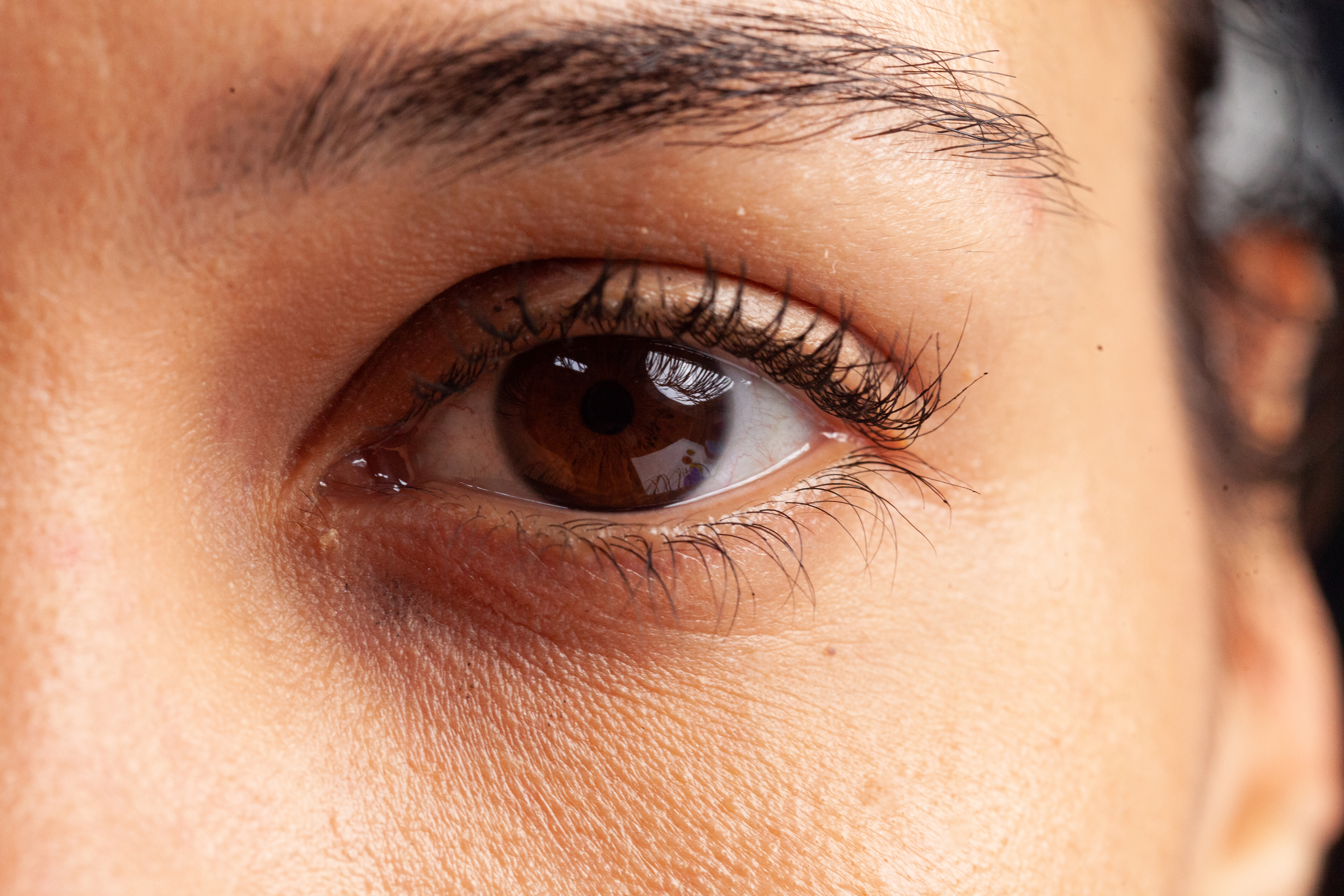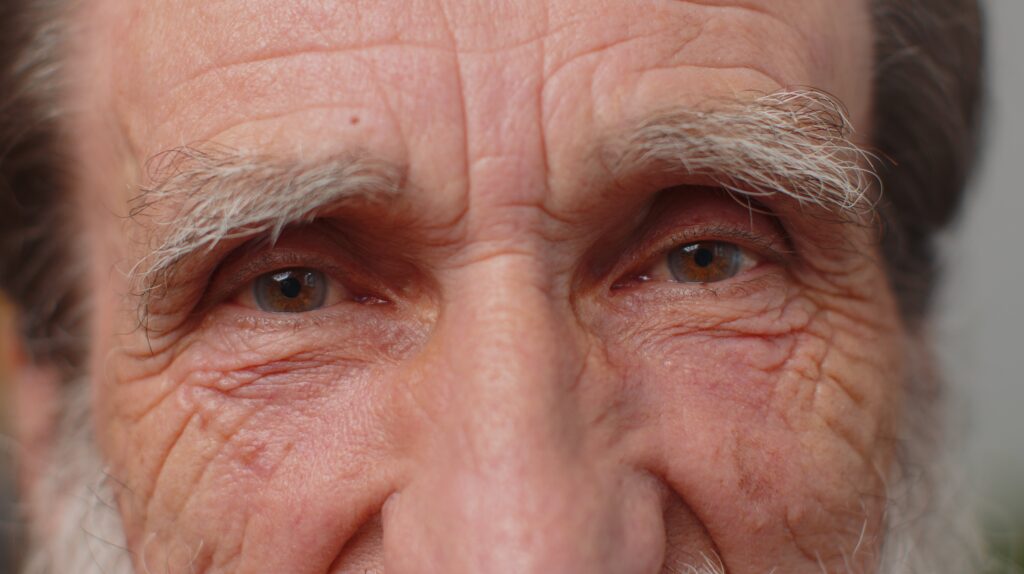Updated on September 24, 2024
Brown Eye Color


Vision Center is funded by our readers. We may earn commissions if you purchase something via one of our links.
Do you have brown or hazel eyes, or wish you did? From the rich hazel hues to melancholic dark chocolate tones, there's something truly captivating about this eye color.
Whether in a film scene or an everyday glance across a crowded room, having brown eyes can bring an extra sparkle of mysterious beauty. Here's what you need to know about this versatile eye color.
What Causes Brown Eyes?
Just like skin and hair color, melanin determines your eye color. Melanin resides in the iris, the circular “colored part” of the eye.
Because melanin is a brown pigment, all eyes are technically brown. Some are lighter than others because they have less melanin; brown eyes have more.
When light hits the iris of eyes with less melanin, it splits into various colors along the spectrum (known as Rayleigh scattering). Your genetics determines your level of melanin.
Scientists have identified 16 genes that play a role in determining eye color. One of the most important is OCA2 because it controls melanin production. People with lighter eyes have a mutation that “deactivates” this gene.
Brown Eyes are the Most Common Eye Color
Over 70 to 80% of the global population has brown eyes, making it the most common eye color in the world.
- Most people in Asia and Africa have brown eyes.
- Eye color varies by region in Europe—people in Northern Europe have lighter eyes than those in the South.
- In the United States, people with brown eyes make up 41% of the population.
The Rarity of Brown Eyes and Its Shades
Brown eyes are the most common eye color in the world. However, they remain special and unique because each person's eye color is slightly different due to genetic variations.
For example, hazel eyes are the second rarest eye color, while amber eyes are highly atypical.12 Light brown eyes, however, are more common in Western countries. Even though they’re not rare, they still have unique depth and warmth that sets them apart from other eye colors.
In natural sunlight, brown eyes may appear darker and warmer. In contrast, dim or fluorescent lighting may make them look lighter and golden.
Do All Brown Eyes Look the Same?
Brown eyes have various shades—from light caramel to dark brown, bordering on black. Lighter shades of brown are more common in the US and Europe. At the same time, darker hues are more prevalent in Asia and Africa.
Here are some examples of the various shades brown eyes can come in:



Exploring the Shades of Brown Eyes
Here's how to distinguish the various shades of brown eyes:
- Light Brown Eyes: Light brown eyes are sometimes called golden or honey-brown because they have warm tones ranging from yellow and amber to light shades of brown.
- Dark Brown Eyes: Dark brown eyes are the deepest, richest shade of brown. They often appear opaque, like two dark pools.
- Hazel Eyes: Hazel eyes are a mix of light and dark shades of brown, often with flecks of gold or yellow. Depending on the lighting, people with this eye color may also have green eyes.
- Amber Eyes: Amber eyes are rare and warm-toned. They can range from light yellow to golden brown with orange, copper, or red flecks.
What are the Health Benefits of Brown Eyes?
People with brown eyes may be less vulnerable to some diseases. Ocular melanoma, a cancer of the eye, afflicts people with brown eyes less than people with lighter eyes. People with brown eyes are also less vulnerable to Type 1 Diabetes.7
Can Brown-Eyed Parents Have Blue-Eyed Children?
Brown eyes are genetically dominant, meaning two people with brown eyes will generally have a brown-eyed baby. If two blue-eyed parents have a recessive gene for brown eyes, their child can inherit it.
If only one or neither brown-eyed parent carries a recessive blue eye gene, the chance their baby will have blue eyes is zero.
Changing Your Eye Color With Contacts
Just because your eye color is inherited doesn’t mean you’re stuck with it. Hollywood actors have used contacts for decades to get their eyes the desired color.
Colored contacts come in several colors, making them a good option for those who want to experiment with new looks. However, the FDA also regulates it, so they aren’t always easy to get. You’ll need to ask your doctor for a prescription if you want some.
8 Interesting Facts About Brown Eyes
Here are seven interesting facts about brown eyes:
1. Fast Reflexes
Researchers at the University of Louisville found that eye color may be linked to sports performance. People with brown eyes performed better in fast-paced sports like football and hockey than their lighter-eyed counterparts.5
2. Some Brown Eyes Were Originally Blue
While Europeans can have brown eyes just like people from other parts of the world, the difference is that Europeans with brown eyes aren’t born with them.
According to an article in LiveScience, most European babies are born with blue eyes. Those with brown eyes develop them months later as melanin production picks up.10 This phenomenon gives rise to the commonly used term "baby blues."
3. Lower Pain Tolerance
It seems hard to believe that eye color could play a role in perceptions of pain, but that’s what researchers have found.
A study in the Journal of Pain found that pregnant women with brown eyes had more painful times giving birth than lighter-eyed women.8 They also were more susceptible to anxiety, depression, and even sleep issues.9
4. Seen as More Trustworthy
Brown-eyed people are seen as more trustworthy. A Czech study found that participants looking at photos of people with brown eyes rated them more reliable than those with blue eyes.3
While that study was small, polling data shows people associate brown eyes with kindness, patience, and reliability.2
5. Fewer Hearing Problems
According to the National Library of Medicine, eye color is a risk factor for hearing loss.8
Melanin can protect nerves from noise. Since brown-eyed people tend to have more melanin, they’re less sensitive to loud noises.
6. Less Sensitive to Sunlight
People with light-colored eyes often find bright sunlight uncomfortable (a condition known as photophobia). Due to their higher melanin, people with brown eyes are more comfortable with bright light.
7. Lower Alcohol Tolerance
It turns out that people with brown colored eyes are more sensitive to alcohol. Several studies have found that people with lighter eyes can drink more without getting drunk as quickly.1
But while this means they can hold their liquor more, it also raises their risk for alcoholism. Because people with brown eyes have less of a tolerance for alcohol, they end up drinking less overall, which lowers their risk for addiction.
8. More Likely to Wish for a Different Eye Color
Perhaps because they’re the most common, people with brown eyes are likelier to wish they had a different color.
According to a poll by 1800Contacts, brown-eyed respondents were at number one, with 26.2% saying they wish they had a different eye color, followed by hazel at 17.1%.2
The Beauty of Brown Eyes in Different Cultures
People have celebrated brown eyes in various cultures throughout history. The eye color has been associated with being trustworthy, kindhearted, and strong.11
In Japan and India, brown eyes signify elegance and beauty.8,9 In pre-Islamic Arabia, people connected green and blue eyes to "negative traits.” In contrast, they saw brown eyes as a more noble quality.10
In this article
9 sources cited
Updated on September 24, 2024
Updated on September 24, 2024
About Our Contributors
Vincent Ayaga is a medical researcher and seasoned content writer with a bachelor's degree in Medical Microbiology. Specializing in disease investigation, prevention, and control, Vincent is dedicated to raising awareness about visual problems and the latest evidence-based solutions in ophthalmology. He strongly believes in the transformative power of ophthalmic education through research to inform and educate those seeking knowledge in eye health.
Dr. Melody Huang is an optometrist and freelance health writer with a passion for educating people about eye health. With her unique blend of clinical expertise and writing skills, Dr. Huang seeks to guide individuals towards healthier and happier lives. Her interests extend to Eastern medicine and integrative healthcare approaches. Outside of work, she enjoys exploring new skincare products, experimenting with food recipes, and spending time with her adopted cats.

